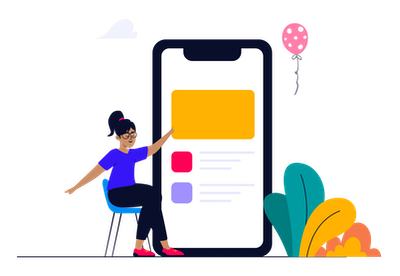APPLYING PROBLEM SPACE KNOWLEDGE
Why listening deeply is so hard
It’s not just about ‘lending an ear’

Listening deeply is a topic I am passionate about, not because I am good at it (far from it!) but because it is so deeply needed – not just in research but in our everyday conversations with people. If only more people knew the power of listening and being heard deeply.
Because of this, I have frequently written and spoken about listening, from how listening deeply can transform you into a better designer and leader, to how listening deeply helps hiring managers sift good candidates, and even in coaching your mentees.
As I practice listening deeply in my client research work and my conversations with others, I have made mistakes but learnt to be better through them. Here are some lessons I learnt about why listening deeply is so hard, particularly in the context of problem space research, an approach I learnt from Indi Young:
1. The setting contains distractions

My listening sessions are typically conducted online, remotely, and audio-only. Before a listening session, I would typically encourage participants to ensure they are taking the call from a quiet room or area that is free from distraction. A distraction-free setting is critical to creating the opportunity to listen deeply so that the speaker and listener will not be distracted from the conversation nor from their train of thoughts.
That seems simple enough to organise, until I heard Slack message notifications during one listening session. I then realise that unless the call is conducted after work hours (where you risk participants feeling fatigued), the participant may not be comfortable to turn off their mobile phone or laptop notifications. Some participants have taken up phone calls during my listening sessions with them and this has impacted their flow of thoughts and I couldn’t go as deep with them as they were distracted by whatever was shared in the phone or Slack conversation.
Both the speaker and the listener should engage their attention on each other, in order to have conversations at depth.
2. You need to take an interest in the person and what they have to say

I am not always the most enthusiastic listener, and I recognise that this impacts the success of my listening session. There were times when I conducted a listening session at a time when I felt slightly tired or when I was rushing some errands. I have also conducted listening sessions when my mind was not settled down and I was thinking through some personal issues. All these factors, unfortunately, have affected the quality of my conversations with the participants. If I don’t realise it soon enough and snap out of it, the session is ‘wasted’. On top of that, the participant stipend will still need to be paid as it is not the participant’s fault that I am not focused during the conversation.
What I have learnt is to not schedule any exhausting task on the day of the listening session and to have some quietness before the listening sessions. This helps your mind to be at rest and excited to begin the conversation. Believe me, your enthusiasm and interest in the conversation will be noticeable and the speaker will be more engaged if you are truly listening deeply.
3. You have your own agenda and it is not being met

It is not uncommon for me to go into each listening session, fearing that my client’s objectives are not met. Some of my thoughts, for example:
What if the participant doesn’t have much to say about how they could be a potential user of my client’s product?
What if the participant has no relevant sharing about my client’s product or industry?
This is usually resolved by using the respondent survey with essay questions and spoken screener conducted before the actual listening session. Yet these fears are real and I have often felt them. The danger is that these thoughts belong in the solution space, however well-meaning they can be. As a problem space researcher, I sometimes fall into the trap of rushing into ‘the future’ where I can ideate solutions for my client, rather than remembering that the purpose of these listening sessions is to cultivate a deeper awareness of what is going through a person’s mind when pursuing their purpose.
Of course, I don’t mean that you go into the listening session without any ‘topic’ at hand. This is resolved at the first stage of the study, called ‘Framing Your Study’. At this stage, the study scope should have been defined with stakeholders. The scope should be narrow enough to still be relevant to the business and broad enough to uncover new opportunities that the company has not discovered.
*
By now, you would have realised that these principles don’t just apply to research but also to listening to a fellow human being. I hope that recognising these challenges in listening deeply will help you to be a better listener not just as a UX researcher but as a friend, co-worker or a family member.
I hope to add more to this story from time to time as I learn hard lessons from listening deeply. Thank you for reading!
By starting this series on Applying Problem Space Knowledge, I am excited to share the real impact of developing empathy at work whether in a problem space study, mentoring others, transforming work culture, and more. Already, it is changing the way I listen and relate to people.
